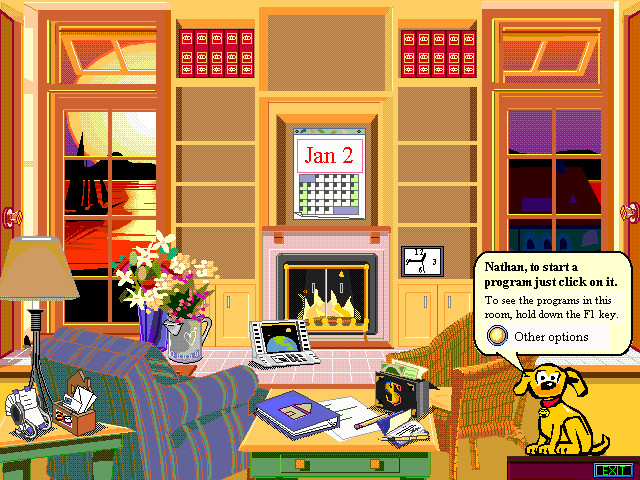Alan Lee, a director (at the level of my manager’s manager’s manager) called me today. It’s never a good thing when a third-level manager calls you.
As it turned out, he wanted to know if I could demo, at a meeting he’s having on Thursday morning, the way in which we use an issues tracking database in our organization. Whew!
Our Mostly Social Book Club met today, and while we didn’t talk about books at all, we did talk about movies. In fact, we spent some time trying to agree on a day next week that we might all see TransAmerica. I’m the only one who has seen it so far.
We also firmed up our plans for dinner at Janet’s on February 17th. Janet and Beth are providing the entrée, a Curry Chicken dish, Sharon is bringing salad fixings, Suzanne is bringing the dessert, and I’m bringing a chip and dip appetizer, which will consist of:
|
I hate that Mary isn’t going to be able to make the movie or the dinner party. Bummer.
Most of my evening tonight was spent doing homework for COM 487 Internet & Society. Our reading was called, The Desktop, an excerpted chapter of a book called Interface Culture : How New Technology Transforms the Way We Create and Communicate by Steven Johnson. I learned about two computer programs I hadn’t heard of before.
One was “Microsoft Bob.”
| The theory behind Bob was to replace the specialized metaphors of the PARC-style desktop with a pseudo-spatial virtual reality in which programs and documents were represented by familiar, everyday objects. The crude graphics of the home screen are an instant clue to what went wrong; in practice, Bob was a cartoonish, cloying interface populated by “Personal Guides” whose saccharine pseudo-friendliness failed to mask extreme mechanical stupidity.
Microsoft Bob became the worst flop in Microsoft’s history, a debacle so embarrassing that the company destroyed all copies of the software it could get its hands on and attempted to erase the entire episode from the public record. The only “Bob” novelty to survive its demise was none other than Clippy, the painfully distracting “assistant” in Microsoft Word. Despite repeated later paeans to “innovation”, Microsoft has never since attempted any advance in GUI design that went deeper than improved eye candy. Once again, the next steps forward came out of the Unix world. |
The other program was The Palace, which is a is a software program used to access two-dimensional virtual communities, also called palaces. A typical palace is represented as a series of flat backgrounds with one or more clickable areas, or doors, and players represented by either the default spherical avatar or a user-created avatar up to 132×132 pixels large, with an 8-bit color palette.
| Palace.com is a website that caters mostly to teenagers for chats with an elaborate avatar system. The specialty of The Palace chat is that members can create their own worlds and avatars (images to represent themselves). They can start a Palace server from their home computer and build a chat with sounds, animations and games.
Once the member has created an avatar to represent herself or himself, the member can pick up various pieces of clothing or other items, such as hats, handbags, cans of soda, candy bars, bicycles, or hand tools. Because of the cartoon like chatting with little speech balloons The Palace is still pretty popular with young Internet users. A group of community leaders have managed to keep all the Palace info alive and online.
|
I devised my blog entry summing up what this reading was about, and its importance in understanding the topic of Internet & Society. My conclusion?
| This reading is important in understanding the topic of Internet & Society in that it describes how an interface using metaphor mediates the way in which, and the extent to which, users immerse themselves in an information space. |
Stick that in your information space and smoke it.









